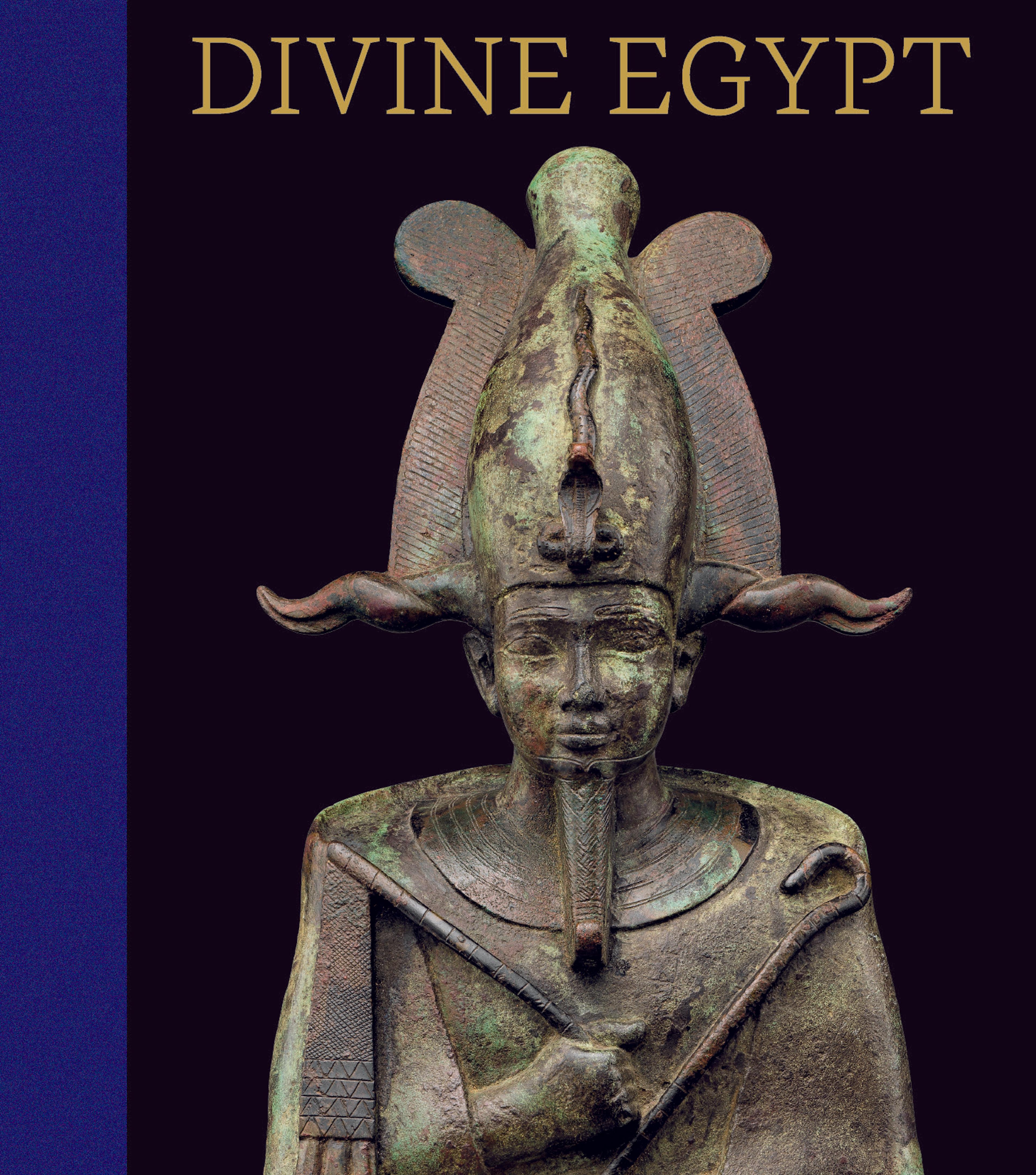Figure of a rearing cobra with lion head
This unusual figure takes the form of a rearing serpent with a feline head. The hooding cobra, or uraeus (ancient Egyptian iaret) is well-known in pharaonic art, often used to represent protective goddesses ready to spit fire and venom at the enemies of Egypt and of the cosmic order. The feline head, whose rounded ears suggest a lion or lioness, also associates the figure with fierce goddesses such as Wadjet (who is often depicted as a cobra), Sakhmet, or Bastet. This composite creature is rare in bronze or copper alloy, but is not uncommon in the amuletic repertoire (see 10.130.1952).
Based on two-dimensional representations of similar feline-headed serpents, a more specific context for this piece may also be suggested: This could be one of a group of four lioness-headed snake deities who are shown in several temple reliefs protecting the god Osiris. In these reliefs, Osiris is embodied by the "Abydos fetish," a pole topped by a rounded mound.
This figure sits atop long thick tangs with flat bottoms, so was meant to be attached to something else. It might have been fastened to a base and set up in a temple, or might have formed part of a standard used in a temple procession or other ritual.
Based on two-dimensional representations of similar feline-headed serpents, a more specific context for this piece may also be suggested: This could be one of a group of four lioness-headed snake deities who are shown in several temple reliefs protecting the god Osiris. In these reliefs, Osiris is embodied by the "Abydos fetish," a pole topped by a rounded mound.
This figure sits atop long thick tangs with flat bottoms, so was meant to be attached to something else. It might have been fastened to a base and set up in a temple, or might have formed part of a standard used in a temple procession or other ritual.
Artwork Details
- Title: Figure of a rearing cobra with lion head
- Period: Late Period – Ptolemaic Period
- Date: 664–30 BCE
- Geography: From Egypt
- Medium: Leaded bronze
- Dimensions: H. 11.8 × W. 3.5 × D. 7.5 cm (4 5/8 × 1 3/8 × 2 15/16 in.)
- Credit Line: Gift of Adina Lei Savin, in honor of Dr. William Benson Harer Jr., 2022
- Object Number: 2022.420
- Curatorial Department: Egyptian Art
More Artwork
Research Resources
The Met provides unparalleled resources for research and welcomes an international community of students and scholars. The Met's Open Access API is where creators and researchers can connect to the The Met collection. Open Access data and public domain images are available for unrestricted commercial and noncommercial use without permission or fee.
To request images under copyright and other restrictions, please use this Image Request form.
Feedback
We continue to research and examine historical and cultural context for objects in The Met collection. If you have comments or questions about this object record, please contact us using the form below. The Museum looks forward to receiving your comments.
